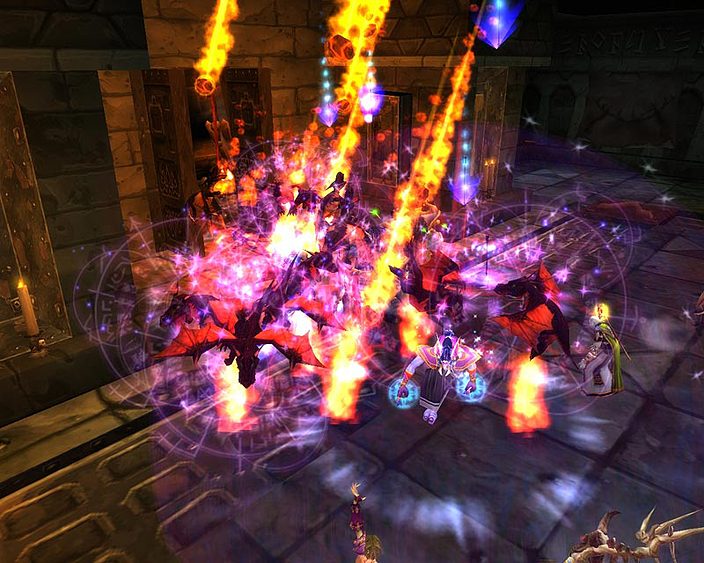Si on définit la mélancolie comme une inaptitude au bonheur, on peut imaginer reconstruire grossièrement le processus qu'a suivi Lars von Trier pour écrire le scénario de son dernier film Melancholia. Il lui fallait d'abord poser comme cadre un événement qui se prête pleinement au bonheur -- un mariage fastueux, un avenir professionnel radieux, etc. -- pour mieux faire ressortir le caractère (apparemment) abbérant des sentiments d'abatement de la mariée Justine (Kirsten Dunst, prix d'interprétation féminine à Cannes, même si c'est plutôt Charlotte Gainsbourg qu'on regarde.. mais bon elle l'avait déjà pécho en 2009 pour sa prestation dans Antichrist). Sa froideur et son détachement incompréhensibles finissent par faire capoter le mariage et partir le marié.
La deuxième partie du film décrit les quelques jours précédant la collision d'une planète nommée Melancholia qui se cachait jusque-là derrière le Soleil. J'y vois une variation sur le même thème d'un bonheur à portée de main (une jolie famille dans une belle propriété, un événement astronomique unique et excitant à observer, etc.) qui périclite malgré tout. La destruction de la vie sur Terre (et donc partout selon Justine) qui s'ensuit est l'image amplifiée de la séparation des mariés qui les prive de leur chance de progéniture. C'est donc la même histoire qui est racontée de deux manières différentes: la première fois à un niveau personnel, famillial, et la seconde à un niveau cosmologique. Une telle projection de motifs psychologiques sur des éléments naturels me fait penser à la manière dont les alchimistes projetaient leurs conflits internes sur les métaux. Jung disait que l'alchimie constituait le revers de la médaille du christianisme en ce sens qu'alors que les chrétiens se considéraient comme pécheurs originels et cherchaient à se sauver par la foi, les alchimistes considéraient que c'était la matière physique qui était corrompue et voulaient la purifier en transformant par exemple le plomb en or (philosophique).
Peut-être Lars a-t-il été influencé par la lecture de Saturne et la Mélancolie de Panofsky et Saxl?
La deuxième partie du film décrit les quelques jours précédant la collision d'une planète nommée Melancholia qui se cachait jusque-là derrière le Soleil. J'y vois une variation sur le même thème d'un bonheur à portée de main (une jolie famille dans une belle propriété, un événement astronomique unique et excitant à observer, etc.) qui périclite malgré tout. La destruction de la vie sur Terre (et donc partout selon Justine) qui s'ensuit est l'image amplifiée de la séparation des mariés qui les prive de leur chance de progéniture. C'est donc la même histoire qui est racontée de deux manières différentes: la première fois à un niveau personnel, famillial, et la seconde à un niveau cosmologique. Une telle projection de motifs psychologiques sur des éléments naturels me fait penser à la manière dont les alchimistes projetaient leurs conflits internes sur les métaux. Jung disait que l'alchimie constituait le revers de la médaille du christianisme en ce sens qu'alors que les chrétiens se considéraient comme pécheurs originels et cherchaient à se sauver par la foi, les alchimistes considéraient que c'était la matière physique qui était corrompue et voulaient la purifier en transformant par exemple le plomb en or (philosophique).
Peut-être Lars a-t-il été influencé par la lecture de Saturne et la Mélancolie de Panofsky et Saxl?








